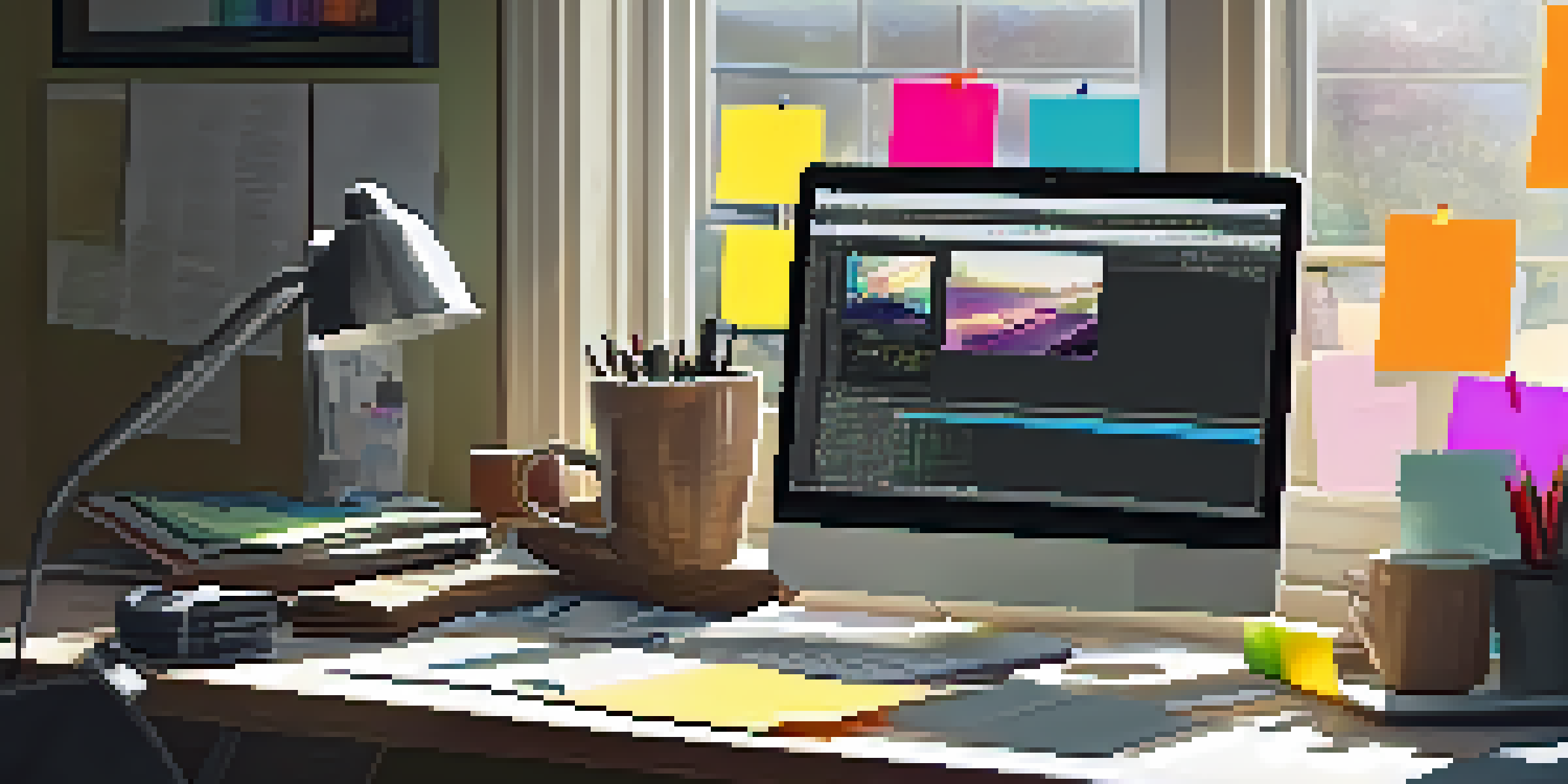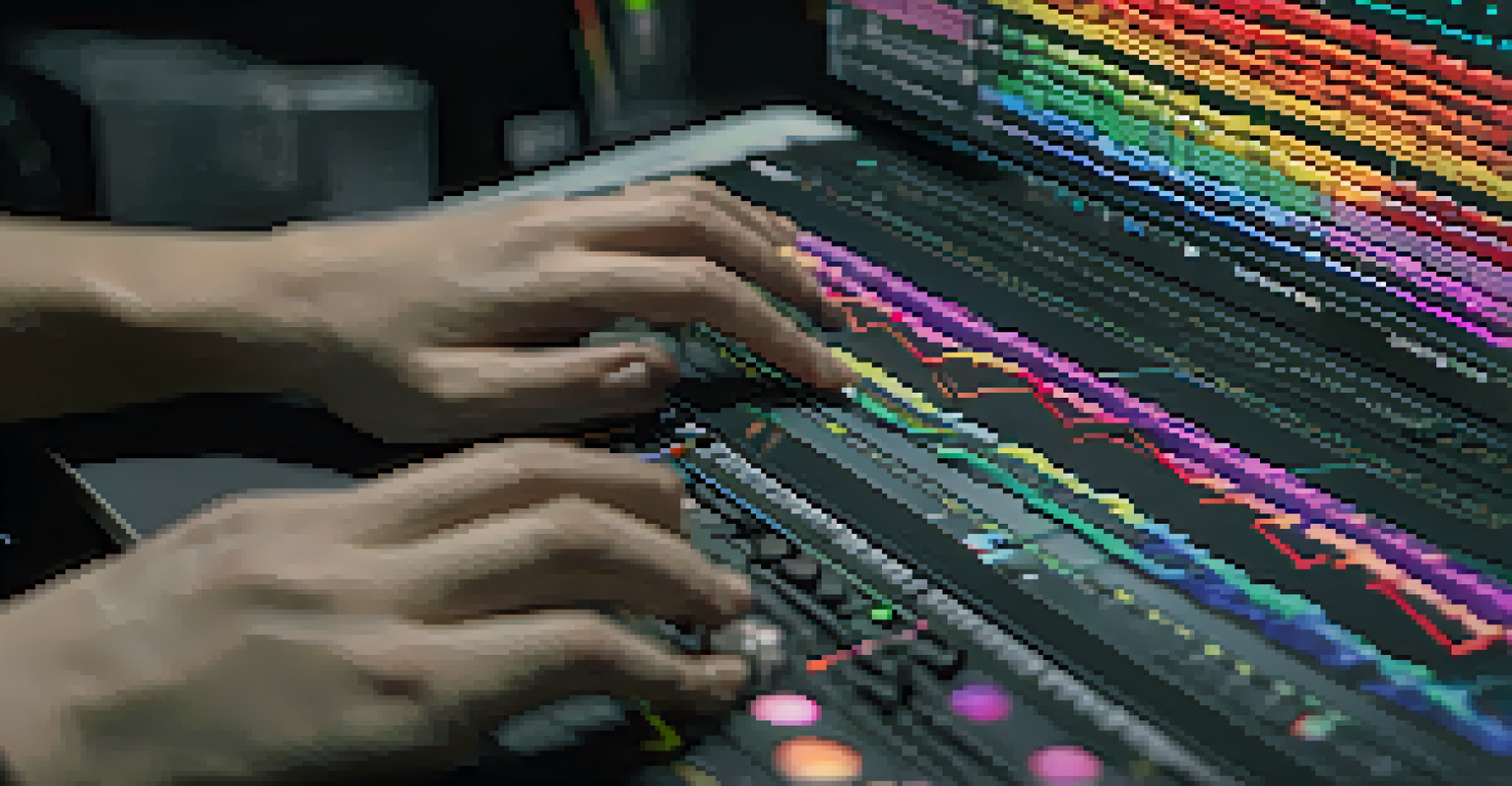The Art of Transition: Creating Seamless Cuts in Editing

Understanding the Importance of Seamless Cuts in Editing
Seamless cuts are the backbone of effective video editing, ensuring a smooth narrative flow. They help maintain audience engagement and create a cohesive story that feels natural. Without these transitions, a video can feel disjointed and confusing, detracting from the viewer’s experience.
The best place to cry is on a man's shoulder.
Think of seamless cuts like a well-choreographed dance; each movement transitions fluidly to the next, keeping the audience captivated. When done correctly, these cuts can evoke emotions, highlight key moments, and enhance the overall pacing of your video. The aim is to make viewers forget they’re watching an edited piece and immerse themselves in the story.
Incorporating seamless cuts requires a keen understanding of both the narrative and technical aspects of editing. By mastering this skill, editors can elevate their work and create videos that resonate with their audience. So, let’s dive into the techniques that can help you achieve these smooth transitions.
Types of Cuts: Choosing the Right Transition for Your Story
There are various types of cuts used in editing, each serving a distinct purpose. The most common ones include the straight cut, jump cut, and match cut. Understanding when and how to use these cuts is crucial for maintaining narrative continuity and viewer engagement.

For instance, a straight cut is the simplest form, transitioning from one shot to another without any additional effects. It’s often used to maintain the flow of dialogue or action, making it an essential tool in storytelling. On the other hand, a jump cut can create a sense of urgency or highlight a change in time, but it should be used sparingly to avoid confusion.
Seamless Cuts Enhance Storytelling
Seamless cuts are crucial for maintaining narrative flow and keeping the audience engaged in the story.
Match cuts, which connect two visually similar scenes, can create powerful links between ideas or themes. By selecting the right type of cut for each moment, you can enhance the storytelling and ensure that your transitions feel intentional and seamless.
The Role of Sound in Creating Seamless Cuts
Sound plays a pivotal role in enhancing the effectiveness of seamless cuts. When paired with visual transitions, audio cues can help establish continuity and reinforce the emotional tone of the scene. For example, a sudden silence can emphasize a dramatic cut, while a smooth fade in music can aid in a more gentle transition.
Editing is the art of making a cut that feels like it was always meant to be.
Consider how sound effects or ambient noise can bridge the gap between two scenes. By layering sounds that flow from one shot to the next, you create a more immersive experience for your audience. This technique keeps viewers engaged and helps them feel the rhythm of the narrative.
Moreover, using consistent audio themes throughout your project can create a sense of cohesion. By paying attention to how sound interacts with visuals, you can create transitions that feel fluid and enhance the overall storytelling.
Cutting for Emotion: The Power of Timing in Transitions
Timing is everything in editing, especially when it comes to creating emotional impacts through cuts. A well-timed transition can amplify the audience's feelings, whether it’s joy, suspense, or sadness. This is where the editor's intuition comes into play, as they gauge the perfect moment to make a cut.
For example, cutting away from a character during a moment of vulnerability can create a powerful emotional effect. This technique allows viewers to reflect on the significance of the moment, deepening their connection to the story. Conversely, a quick cut during a high-energy scene can heighten excitement and keep the pace lively.
Sound Complements Visual Transitions
Incorporating sound effectively with visual cuts reinforces emotional tone and continuity in video editing.
Ultimately, the goal is to evoke a response from the audience. By mastering the art of timing in your transitions, you can craft a more engaging and emotionally rich narrative that resonates long after the credits roll.
Visual Techniques to Enhance Seamless Cuts
Visual techniques are essential tools for achieving seamless cuts that feel fluid and natural. Techniques such as match action, where the action continues across cuts, can make transitions feel effortless. For instance, if a character is reaching for a door handle, cutting to the next shot where they open the door keeps the momentum alive.
Using similar colors, lighting, or framing between shots can also aid in creating visual cohesion. When scenes share visual elements, it can create an unconscious connection that makes viewers more likely to accept the transition. This technique is particularly effective when shifting between different locations or times in a narrative.
Incorporating these visual techniques not only enhances the flow of your editing but also enriches the storytelling. By being mindful of how visuals interact during cuts, you can guide your audience through the narrative seamlessly.
Common Mistakes to Avoid When Creating Cuts
Even seasoned editors can fall into common traps when it comes to cuts. One of the most frequent mistakes is overusing jump cuts, which can disrupt the flow and confuse the audience. While jump cuts can be effective in certain contexts, relying on them too heavily can detract from the narrative’s clarity.
Another mistake is failing to consider the emotional impact of a cut. If a transition feels abrupt, it may leave viewers disoriented and disengaged. Always ask yourself how a cut affects the mood and pacing of the scene, and whether it aligns with the story's intent.
Timing Plays a Key Role in Edits
Mastering the timing of transitions can amplify emotional impact and enhance viewer connection to the narrative.
Lastly, neglecting the role of sound can lead to jarring transitions. Ensure that audio transitions complement visual cuts to create a more immersive experience. Avoiding these common pitfalls will help you craft more polished and impactful edits.
Practicing Your Skills: Exercises for Better Transitions
Like any art form, honing your editing skills takes practice, especially when it comes to creating seamless cuts. One effective exercise is to watch your favorite films and analyze the transitions used throughout. Take notes on the types of cuts and how they affect the pacing and emotion of each scene.
Another exercise is to create a short video project that focuses solely on transitions. Challenge yourself to use different types of cuts and experiment with pacing, sound, and visuals. This hands-on approach will help you understand the nuances of editing and refine your technique.

Lastly, seek feedback from peers or mentors. Sharing your work and receiving constructive criticism can provide valuable insights and help you identify areas for improvement. By continuously practicing, you’ll enhance your skills and develop a unique editing style that resonates with your audience.